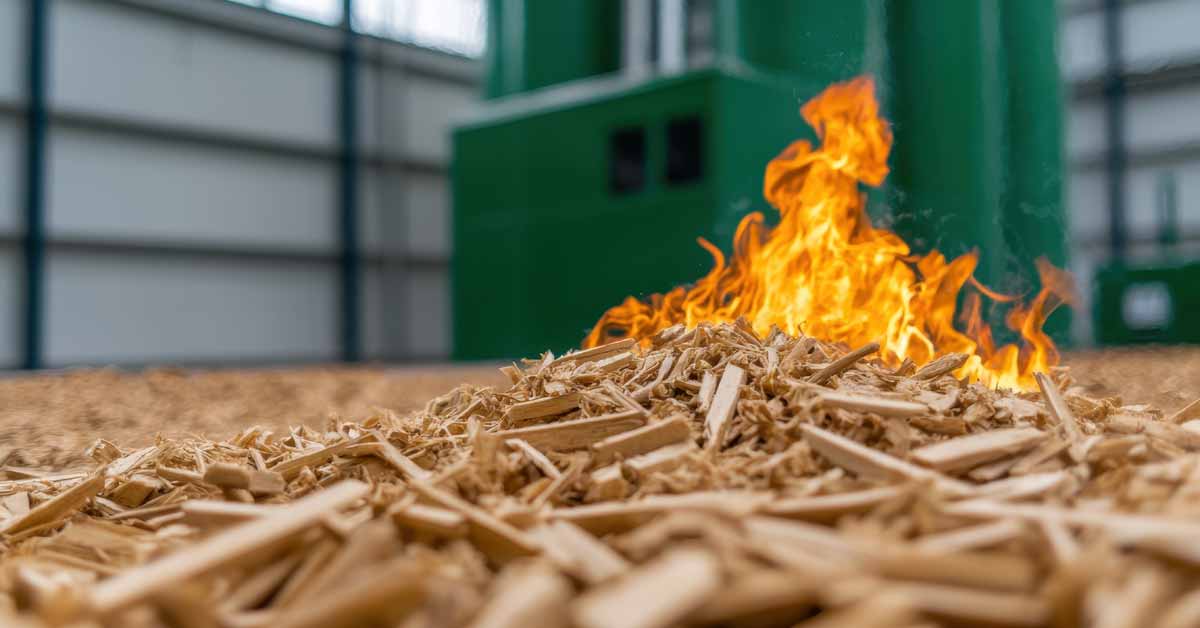2 min read
Waste Biomass Gains Momentum in Renewables Value Chain
ResourceWise
:
Mar 13, 2025 12:00:00 AM

As sourcing for feedstocks in renewable energy and biofuel production ramps up, the scope of feedstock materials has expanded. Waste biomass continues its rise to prominence as a sustainable source to power these industries.
Waste biomass includes organic materials such as food scraps, used cooking oil, and wood waste that can be utilized and converted into a renewable energy source. Its growing role as an energy source highlights a valuable partnership between waste producers and industries looking for low-emission heat and power solutions.
Under systems like the EU and UK Emissions Trading Schemes, biomass residues offer a way to generate energy without adding to carbon emissions. This shift is helping industries lower their carbon footprint while simultaneously conserving materials that would otherwise end up as waste.
Waste Biomass: A Preferred Alternative
Cultivated biomass includes materials such as energy crops that are produced and cultivated for use in bioenergy. Although renewable, these can lead to concerns over emissions and land use change from food-based agriculture.
Using waste biomass avoids these issues and achieves carbon reduction goals more efficiently. Unsurprisingly, regulators and sustainability programs across Europe and California favor waste-based inputs.
A clear example is the surge in demand for used cooking oil (UCO) in biofuel markets in Europe and the US. These waste streams have become valuable commodities as companies seek ways to cut carbon emissions.
The Challenge of Supply Chain Integrity
With the rising value of waste-based inputs, there's growing pressure to ensure supply chains remain credible. However, several risks could also impact this dynamic.
For one, some businesses may attempt to replace waste materials with virgin resources to take advantage of higher market prices. Preventing this requires strong supply chain tracking systems. This push for transparency also encourages circular economy practices in other industries.
Business Benefits and Market Trends
An example of this positive trend is the Belgium-based chemical firm Solvay. The company has transitioned to biomass in a bid to make its products more appealing to buyers in industries such as battery production. The move has already shown a strong export potential in this sector.
Shifting to biomass reduces the company's exposure to tightening EU carbon regulations. These rules currently cover mostly organic bulk chemicals. But as carbon caps become stricter, new industries could also become a part of the conversation.
The Future: Carbon Removal and Revenue Potential
One major opportunity in biomass energy comes in its ability to capture carbon from the atmosphere. If facilities invest in carbon sequestration, they can actually achieve negative emissions. This could become a key revenue stream as carbon credit markets develop.
Businesses require stable funding sources to make these projects financially viable. A reliable market for carbon credits could help secure investments in these high-cost projects.
If structured well, a market could drive more innovation in sustainable energy solutions and accelerate the transition to a circular economy.
A Growing Space for Waste-Based Biomass
The growing adoption of waste biomass energy is reshaping industries, reducing emissions, and creating new economic opportunities. Proper oversight and investment will continue to propel the adoption of waste-based biomass. As demand grows, companies that innovate in supply chain transparency and carbon credit markets will be well-positioned for long-term success.
More Information on Biogenic CO2 Removal
Want to learn more about how waste-based biomass connects to rising CO2 removal development? Our recent Market Insights report, Biogenic Carbon Dioxide Removal Makes Fresh US Stride, directly discusses the burgeoning carbon removal market in the US.
Highlights include:
- Carbon Pipeline Developments
- CDR Credits and Market Expansion
- Investor and Market Trends
- Emerging CDR Trading Platforms
Use the link below to download the report today.






